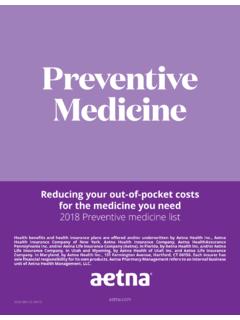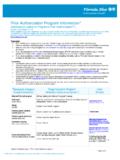Transcription of Country Health SA Local Health Network User guide Basal ...
1 Page 24 Contacts and further information Local contact Clinical pharmacy or visiting pharmacy Diabetes education service Director of Medical Services Visiting or Local endocrinologist or diabetes physician For urgent medical advice/support, contact your nearest regional or metropolitan hospital. Country Health SA Local Health Network - Diabetes Ph: 08 8226 7168 Australian Diabetes Society Diabetes management in general practice - guidelines for type 2 diabetes. Diabetes Australia National Diabetes Service Scheme Acknowledgements Flinders Medical Centre Repatriation General Hospital Pt Augusta Hospital Enquiries to CHSA Diabetes Services 08 82267168 PLEASE NOTE: The Basal -bolus insulin Dosing Chart should not be used for emergencies such as diabetic ketoacidosis, hyperglycaemic hyperosmolar state or for peri operative management or paediatric diabetes.
2 Country Health SA Local Health Network User guide Basal -bolus insulin Dosing Chart: Adult Developed by: CHSA LHN Diabetes Services Approved by: Clinical Cabinet Effective date: 2nd April 2014 Version: 1 Last reviewed: Next review due: April 2015 Page 2 Table of Contents Purpose and background 3 Protocol implementation flow chart 4 insulin requirements 5-6 Which patients do I use it for 7 Which patients don't I use it for 7 How do I write up and use the BBI chart 7-8 Step 1 Using the chart 9 Step 2 Calculating total daily insulin requirements 9 Step 3 Calculating Basal -bolus split 10-11 Step 4 Cross reference medication charts 12 Step 5 Monitoring blood glucose 13 Step 6 Adjusting insulin doses 14-15 Step 7 Preparing for discharge 16 Referral to diabetes educator 17 Case scenario 17 Appendix 1 - Example BBI chart 18 Appendix 2 - Transition from insulin infusion 19 Appendix 3 - BBI chart and protocol 20-21 Notes 22-23
3 Contacts and further information 24 Notes Page 23 Notes Page 22 Page 3 Purpose and background Inpatients with diabetes can have suboptimal pre-admission glycaemic control. Medical stress (eg ischaemia, sepsis, inflammation) can worsen glucose control. In addition, patients in the post-surgical phase are also at risk of hyperglycaemia. Optimising inpatient glucose levels (5-10mmol/L) during hospital admission has been shown to improve morbidity and mortality, patient outcomes and length of stay. The purpose of this user guide is to support clinicians in using the CHSA Basal -bolus insulin Dosing Chart: Adult in a safe and effective way. Basal -bolus insulin (BBI) refers to an insulin regime comprising the combination of a Basal insulin with bolus mealtime insulin .
4 It aims to mimic the natural physiological insulin pattern. The following are general requirements for using the Basal -bolus insulin Dosing Chart: Adult BBI approach is only used for patients who are in hospital and experiencing high BGL s. BGL s should be monitored at least 4 times a day and reviewed daily with appropriate insulin dose changes made. The chart should not be used in diabetic ketoacidosis, hyperglycaemic hyperosmolar state, perioperative or in paediatrics. To view the chart see Appendix 1. Protocol implementation flow chart Page 4 Page 21 Appendix 3 - Basal -bolus insulin chart Page 20 The diagram below demonstrates the insulin response to Basal metabolism and carbohydrate (CHO) intake.
5 Basal insulin requirements Basal insulin is required for background metabolic needs and is not related to food. The green coloured line in the diagram above represents the Basal insulin needs over a 24 hour period. Glargine insulin is used to cover Basal needs in the BBI Dosing Chart. Glargine is administered at 2100 hours and does not need to be given with food. Never stop insulin in type 1 diabetes as diabetic ketoacidosis can occur rapidly without background insulin . Profile of glargine insulin Page 5 insulin requirements insulin levelsMealMealMealmidnightmidnightBasal andbolus insulin requirementsPage 6 Bolus (rapid acting insulin ) requirements Endogenous bolus insulin is released in response to CHO intake.
6 The yellow coloured curves in the diagram (page 4) demonstrates insulin response to a meal. The more CHO, the more insulin is required. CHO amounts will vary due to loss of appetite, re-introduction of solids over a period of days or fasting. Rapid acting insulins (Novorapid , Humalog , Apidra ), are given only in conjunction with meals (bolus insulin ) eg 3 times daily. Profile of rapid acting insulin The BBI chart provides two sections for prescribing bolus (rapid acting) insulin rapid acting insulin with meals correctional rapid insulin with meals. The mealtime bolus insulin can be topped up with correctional rapid acting insulin . An extra 3 units is added if the pre meal BGL is 10-15mmol/L and an extra 6 units if BGL is >15mmol/L.
7 NovoRapid Humalog Page 19 Appendix 2 - Transition from IV insulin infusion Patients must not have their IV insulin infusion discontinued until at least 4 hours after commencement of Basal (glargine) subcutaneous insulin . IV regular(actrapid) insulin has a half-life of only 7 minutes with a duration of approximately 1 hr. IV insulin can only be discontinued once Basal insulin has been on-board for 4 hours. IV insulin adjustments can continue based on blood glucose levels as this ensures adequate insulin coverage during transition to the Basal bolus insulin schedule. Page 18 32To change dosage -cease order and rewrite all 3 doses in new row2/4 Fasting BGL Fasting BGL increased 3/4 Fasting BGL Fasting BGL increased Novo rapid increased due to elevated pre meal BGL andcorrectional doses requiredBBI chart completed appropriatelyAppendix 1 - Example Basal -bolus insulin chart Page 7 1.
8 Inpatients with anticipated or current hyperglycaemia where current diabetes therapy is insufficient eg more than one blood glucose levels (BGL) >10 mmol/L within a 24 hour period. 2. Transitioning from an IV insulin infusion. 3. Use instead of subcutaneous sliding scale insulin regimens. 1. Diabetic ketoacidosis or hyperosmolar hyperglycaemic state where insulin infusion is required. 2. Patients who have target blood glucose on their usual treatment (oral and/or insulin ). These medications can be written on the National Inpatient Medication Chart. 3. Not to be used in paediatrics. 4. Anticipated length of stay less than 48 hours. Which patients do I use the BBI chart for? How do I write up and use the BBI chart?
9 Which patients don't I use it for? insulin orders are divided into three sections: 1. bolus (with meal), 2. correctional (if BGL >10mmol/L), and 3. Basal insulin (given at 2100). Prescriber MUST sign all sections of the BBI chart. How to use steps are on the back of the chart. Page 8 Highlights of main sections on the chart. 20 Daily insulin doseBOLUSR apid insulin (+ correctional prn) Basal long acting insulin50%50%Blood Glucose &Ketone resultsBasal Bolus insulin ChartPage 17 Referral to diabetes educator BBI chart Cease metformin Estimated insulin x 80kgs = 32 units Start Glargine insulin 16 units 2100 Rapid acting insulin 5 units with meals Prior to discharge Recommence metformin Commence additional agents to assist with improving glycaemic control (as admission HbA1c ) Refer to diabetes educator 58 year old man, admitted with pneumonia to medical ward.
10 Type 2 diabetes for 5 years. On Metformin bd. Weight 80kg BGL on admission HbA1c % on admission Case scenario Referral to the diabetes educator. Priority for referral includes; pre-admission HbA1c above admission diagnosis of hypoglycaemia or acute hyperglycaemia commencement of insulin pregnancy or paediatric newly diagnosed. Page 16 The admission HbA1c will assist in determining the best discharge therapy for the person. This is outlined on the back of the form. Once the patients blood glucose levels are consistently within target, consider transferring to planned discharge therapy. Ideally, this should happen 1-2 days before discharge or when medically stable.




